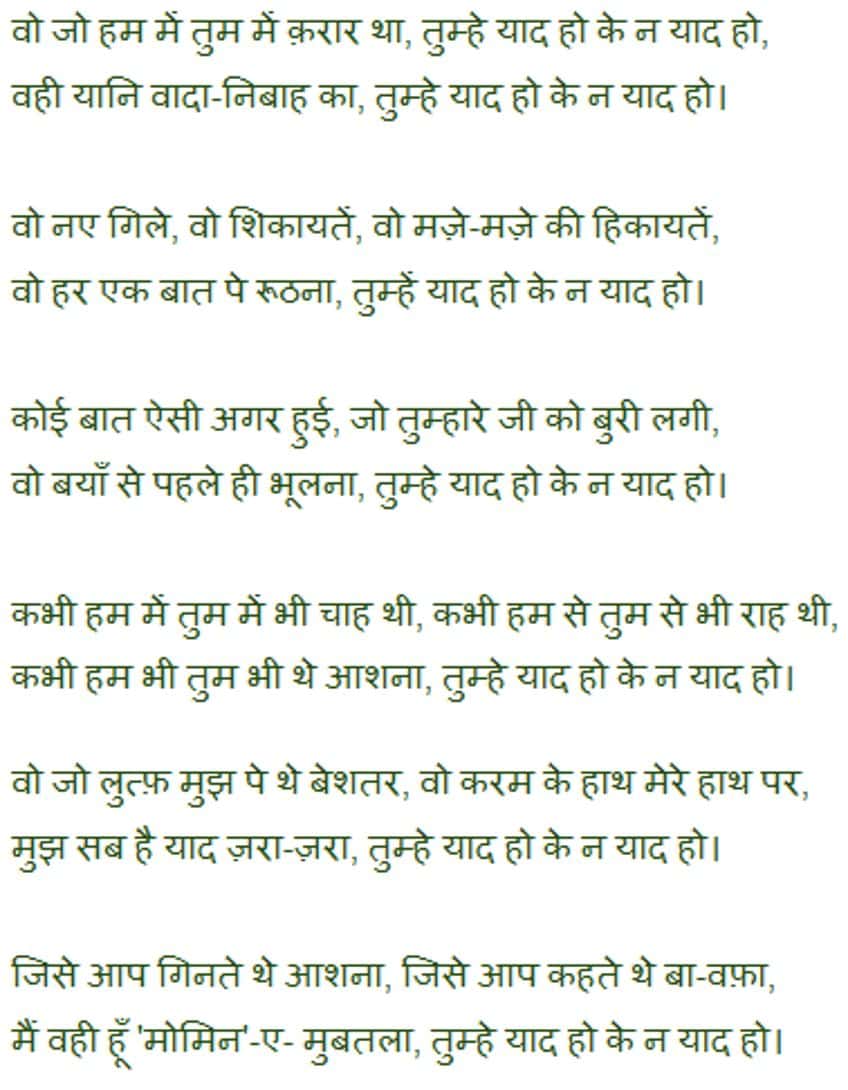Ghazal Poetry – Explore This Unique Arabic Poetic Form
While English language writers tend to stick more closely to Westernized poetic forms, there are many examples of poetry from around the world that have their own long and complex histories. Today, we are going to consider the following question: “What is a Ghazal poem?”. We are going to ask and answer this question by briefly discussing the history of Ghazal poetry, how to write a Ghazal poem, and a few Ghazal examples. This should help you understand this Arabic poetic form, so if you are interested in learning about Ghazal poetry, you have come to the right place!
Table of Contents
A Look at Ghazal Poetry
So, what is a Ghazal poem? This is a type of ode that is often focused on ideas of spiritual and romantic love and often deals with loss too, and it has a very specific structure that will be discussed in more detail below. This structure is also several hundred years old and has its origins in Arabic countries but has since made its way around the world. However, before we kick off with our full discussion about Ghazal poetry, let’s have a look at a quick summary for those who don’t have the time to read everything!

Summary of Ghazal Poetry
While it is preferable to read all the information available to us, if you don’t have the time to read everything below, we can first open with a summary of Ghazal poetry. This is only a short summarization of what follows, but it should help for a baseline understanding of this style of poetry.
- Ghazal poetry originated in Arabic countries. This poetic style first came from Arabia back in the 7th century and then spread through Islamic influence into a number of other countries. It can now be found all over the world.
- Ghazal poetry makes use of a couplet structure. The basic premise behind the Ghazal poem is that it uses a series of couplets instead of traditional stanzas. Each of these couplets also includes a final word that is repeated in every single couplet in the poem.
- Ghazal poetry is a type of ode poetry. This form of poetry is often written in dedication to a sense of romantic or spiritual love, but it can also be used to refer to a feeling of loss.
This concludes our brief Ghazal poetry summary. If you want to learn more about this type of Arabic poetry, then you will have to keep learning.
We are going to move on to the history of this poetic form.
The Origins of a Style: The History of Ghazal Poetry
Ghazal poetry is a particularly ancient form of poetry. It can be traced all the way back to Arabia in the 7th century, and this makes it a kind of Islamic verse. However, it did slowly start to spread. The reasons for this spread are understandable as it moved along with the various Sufi mystics that traveled the land and it also moved along with the Islamic Sultanate, which continually increased in power. By the 12th century, this form of poetry could be found in various places around South Asia.

The Ghazal style would continue to gain in prominence throughout the 13th and 14th centuries thanks to poets like Hafez and Rumi. By the 18th century, the majority of those writing Ghazal poems were doing so in Urdu. However, the transition to European countries would come soon after that, such as through some of the work of Goethe in Germany. While this particular poetic style has always been enormous in various Arabic countries, and those countries that had been strongly influenced by Islamic culture and tradition, it has not had a particularly large role in Western countries. However, it has become more popular, and there are now many in the West who make their own attempts at this type of poetry.
How to Write a Ghazal Poem: The Form of This Type of Poetry
When it comes to how to write a Ghazal poem, there are a number of rules that typically need to be followed. The basic premise behind the Ghazal is that it uses a series of rhyming couplets rather than traditional stanzas (known as bayt or sher). And there needs to be at least five of these couplets, but most have fewer than fifteen. Although, in more recent years, there has been experimentation with the form.
The first couplet of this style (the matla’a) needs to contain the elements that are to be repeated. This means that there must be a refrain word/phrase (the radif) that is found at the end of the second line, and this repeated word or phrase must be found at the end of every couplet. This first couplet must also include a rhyming pattern of some kind (the qaafiyaa) that is repeated throughout the poem.
The last couplet (the maqta’a), on the other hand, should be more personal in tone in comparison to those that have come before.
This structure can be very strict, and to be even more strict, there can also be ideas that each line must have the same metrical structure (the bah’r), each couplet’s first line must be its own statement of some kind (the misra-e-uulaa), and the second line in each couplet must propose the proof of the previous line (the misra-e-sani). All of this goes to show that Ghazal poetry can be a very strict form of poetry. However, this does not mean that a poet cannot play with the form and experiment. Although, there are purists who would likely not be in favor of that approach.
Contemporaries of the Style: A Few Ghazal Examples
While Ghazal poetry has been around for several centuries, we are going to examine some of the newer instances of this poetic style in the English language. The reason for this is primarily because of translation issues. When a poem has been translated from one language to another, the language, rhyme, rhythm, and other elements can be altered. So, to reduce the possibility of this issue, let us rather examine a few of these poems that have been produced in English.

Ghazal for Becoming Your Own Country (2016) by Angel Nafis
| Date Published | 2016 |
| Type of Poem | Ghazal |
| Rhyme Scheme | ABCBDB |
| Meter | Variable |
| Topic | Self-love |
Ghazal for Becoming Your Own Country is a poem by Angel Nafis and a strong contemporary example of Ghazal poetry. The poem is an interesting Ghazal example because it takes some of the more love-oriented aspects of more traditional instances of Ghazal poems and turns them toward the speaker and the reader. The idea of “becoming your own country” is, in this sense, meant to signify the idea of personal and continual self-development.
The early part of the poem is structured around a kind of to-do list layout.

It examines chores and duties that the speaker needs to engage with, but these stop being simple day-to-day elements of life and instead become deeper and more introspectively personal as the poem continues to develop. The poem wants us to accept ourselves, and the repeated word in this particular Ghazal is the word “bride”, which is used in a non-marriage sense to refer to ourselves, such as the line which states that you’ve “Gotsta be your own bride”.
That’s My Heart Right There (2019) Willie Perdomo
| Date Published | 2019 |
| Type of Poem | Ghazal |
| Rhyme Scheme | ABCBDB |
| Meter | Variable |
| Topic | Love |
That’s My Heart Right There is a poem of strong repeated elements. It uses a strong sense of rhyme in its first lines while also focusing, as its repeated word, on “right there”. This poem by Willie Perdomo is a strong example of contemporary Ghazal poetry as it makes use of a general theme of loss tied to a more nostalgic mode of being through the use of the expression “we used to say”, which is followed by the repeated phrase of “as if” in many of the lines.
The poem is concerned with the past and the speaker’s past relationship with someone who is referred to as “my heart”.
This person is metaphorically rendered into an object of affection and directly connected to the oft-used symbol of the heart as a thing of love, honor, and respect. The poem’s concern with this past experience with this person who is their object of affection shows the ways in which love is used in this Ghazal poem, and that is indicative of many instances of the form.
ALZ Ghazal (2021) by Rebecca Faust
| Date Published | 2021 |
| Type of Poem | Ghazal |
| Rhyme Scheme | ABCBDB |
| Meter | Variable |
| Topic | Alzheimer’s disease |
ALZ Ghazal is a very long instance of Ghazal poetry. While most Ghazal poems, as has been mentioned, tend to be on the shorter side of things, there is no definitive reason that Ghazal examples need to be shorter. The length of the poem is also used to refer to a longer and more unfolding kind of narrative style. This is not as common in more traditional examples of Ghazal poetry, but it does show a more contemporary adaptation of this type of poetry.
The primary repeated word in this Ghazal poem is, ironically, the word “repeating”.
However, it is used as a kind of cyclical structure to continually call to mind Alzheimer’s disease which serves as the central theme around which the poem is structured. The monotonous use of this word reinforces, over and over again, the ways in which this disease leads to a repeated experience day after day. In this way, the spiritual loss on display is one that is in keeping with some instances of Ghazal poetry in the more traditional sense, but adaptations in the modern age continue to allow for the production of very interesting takes on classic styles.
Many in the English-speaking world focus on sonnets, limericks, villanelles, and other poetic forms that are found in Western countries, with the occasional haiku for something a little different. Ghazal poetry is a great example of a poem style that should receive more prominence in English-speaking territories. That is why we have discussed the history of this form, how to write a Ghazal poem, and a number of Ghazal examples today. Hopefully, it has been an enlightening read on this interesting poetic style, and while the style is not that prominent in English, there are examples of it that you can find if you decide to do some sleuthing.
Frequently Asked Questions
What Is a Ghazal Poem?
This is a type of ode poem. The style of poetry has its origins in Arabic poetry but has since made its way around the world. The basic idea behind this poetic form is that it is generally concerned with ideas surrounding romantic and spiritual love. There are very specific Ghazal rules that need to be followed for a poem to technically be classified as a Ghazal. When it comes to how to write a Ghazal, an aspiring poet needs to pay close attention to these rules to ensure that they are being adhered to.
What Are the Ghazal Rules?
Ghazal poetry makes use of a number of structural rules that need to be followed. The poem is made up of couplets, and the first of these couplets must contain a refrain word or phrase that is repeated throughout the poem, and it needs to establish the rhyming pattern. In addition, the final couplet of the poem is also usually more personal than those that have come before. The number of couplets can vary, but most Ghazal poems tend to be on the shorter side.
Where Did Ghazal Poetry Originate?
This type of poetry originated as early as the 7th century and was found in Arabia. It quickly made its way through South Asia because of the work of Sufi mystics, as well as thanks to the Islamic Sultanate which had become more powerful in the region. It could soon be found in countries from Persia to India, but would later spread even more widely around the world through the work of the many prominent poets who made use of this style.
What Are Prominent Ghazal Examples?
Ghazal poetry has been around for many centuries, and so there have been many poems in this tradition. There have been prominent and classic Ghazal examples like Beravīd, ey harīfān (12th century) by Rumi and Dil-E-Nadan Tujhe Hua Kya Hai (19th century) by Mirza Ghalib, but there have also been many other, more contemporary attempts at the form, such as those in English that include Ghazal for Becoming Your Own Country (2016) by Angel Nafis, That’s My Heart Right There (2019) Willie Perdomo, and ALZ Ghazal (2021) by Rebecca Faust.
Who Are Prominent Ghazal Poets?
There have been many prominent Ghazal poets over the centuries, and examples of them include figures like Mirza Ghalib, Faiz Ahmed Faiz, Parveen Shakir, Mir Taqi Mir, and Daagh Dehlvi. However, there have also been those who have composed Ghazal poetry in the English language, such as Adrienne Rich and John Hollander. The style of poetry has been around for many centuries, and so there has been a large array of poets who have tried their hand at following Ghazal rules to produce poetry in this format.
Justin van Huyssteen is a freelance writer, novelist, and academic originally from Cape Town, South Africa. At present, he has a bachelor’s degree in English and literary theory and an honor’s degree in literary theory. He is currently working towards his master’s degree in literary theory with a focus on animal studies, critical theory, and semiotics within literature. As a novelist and freelancer, he often writes under the pen name L.C. Lupus.
Justin’s preferred literary movements include modern and postmodern literature with literary fiction and genre fiction like sci-fi, post-apocalyptic, and horror being of particular interest. His academia extends to his interest in prose and narratology. He enjoys analyzing a variety of mediums through a literary lens, such as graphic novels, film, and video games.
Justin is working for artincontext.org as an author and content writer since 2022. He is responsible for all blog posts about architecture, literature and poetry.
Learn more about Justin van Huyssteen and the Art in Context Team.
Cite this Article
Justin, van Huyssteen, “Ghazal Poetry – Explore This Unique Arabic Poetic Form.” Art in Context. November 23, 2023. URL: https://artincontext.org/ghazal-poetry/
van Huyssteen, J. (2023, 23 November). Ghazal Poetry – Explore This Unique Arabic Poetic Form. Art in Context. https://artincontext.org/ghazal-poetry/
van Huyssteen, Justin. “Ghazal Poetry – Explore This Unique Arabic Poetic Form.” Art in Context, November 23, 2023. https://artincontext.org/ghazal-poetry/.









